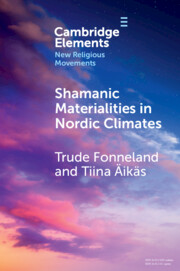Element contents
Shamanic Materialities in Nordic Climates
Published online by Cambridge University Press: 23 August 2023
Summary
- Type
- Element
- Information
- Online ISBN: 9781009376396Publisher: Cambridge University PressPrint publication: 21 September 2023
References
- 9
- Cited by



